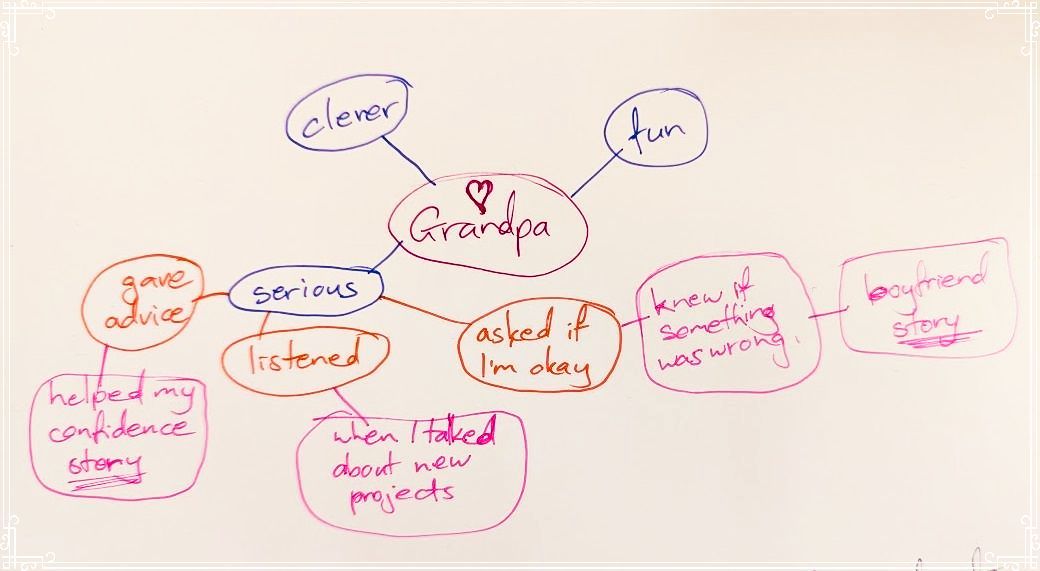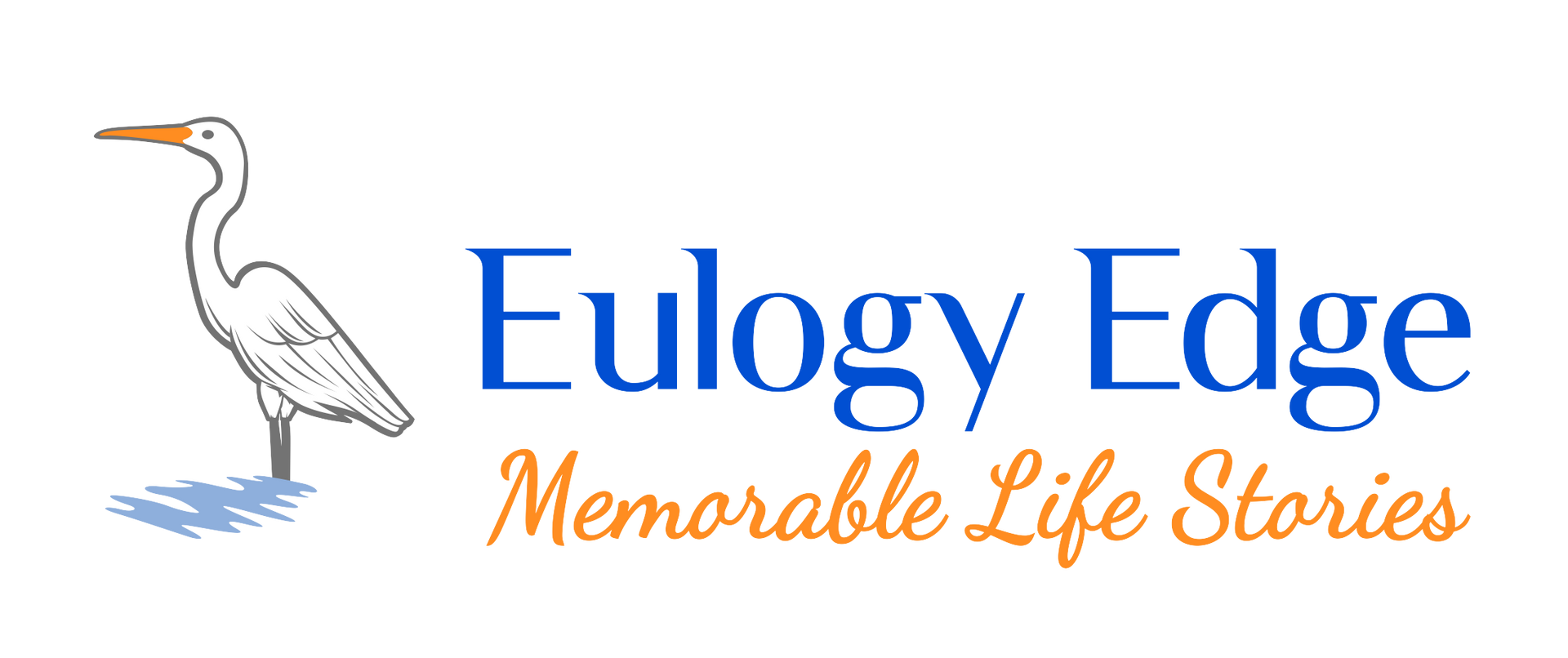3 Tips for Making a Eulogy Memorable
How to get people to listen to your eulogy, enjoy it, and remember it

Eulogies of old
“Travis – sorry – Trevor, was a loving father to his three children: Chloe, Luke and uh Judy, oh, Julie. He was a hard-working man who never missed a day of work and he provided well for his family. Add in what his friends from w... – [hmmph/cough]. Trevor’s friends from work described him as friendly, always on time, and not one to cause any trouble. He will be sorely missed by his wife and children …”
This is the sort of eulogy you could have ended up with two or three decades ago, and you may still sometimes hear eulogies that sound a bit like this. Eulogies used to be formal, solemn speeches where the person’s major life events were listed in chronological order, and they would be praised for being a wonderful spouse, parent, worker, and all-round good person. The speaker was often an older male from the family, or a celebrant reciting information he'd gathered from the family and filled into a template.
These days, eulogies are a lot more free-flowing and casual, giving people an opportunity to remember or honour the person who has died, by giving an interesting and balanced talk about them – in their own style. Most places where funerals or memorials are held, even many religious spaces, now allow you to choose how many eulogies you would like to present, and who presents them – opening the door to honest and entertaining send-offs. Hearing eulogies from a number of people makes for a richer life-celebration, giving the listeners a wider and more interesting view of the person’s life through varied perspectives and peeks into different parts of their life. Everyone listening is bound to learn something new.
The three tips below will get you started on creating a memorable eulogy!
One – you both need to be yourselves
You
If you’re not used to writing or giving speeches, you’re like the majority of the population – and unless you’re a funeral celebrant you probably haven’t presented many eulogies. Don’t be concerned, as no-one expects you to be a professional speaker. In fact, your eulogy will be so much better if you speak in your regular, natural style, using the words you would normally use. If you're a gesturing person, allow your hands free rein, too. The audience will connect with you more when you express your personality, and when they hear your stories and experiences around the person who has died.
Let your personality shine through, although keep in mind the expectations of the venue – a church steeped in historical tradition may not appreciate the light cussing or edgy sentiments that a more modern church or funeral parlour would be okay with.
Your spelling and grammar skills will not be a problem, since you will be speaking in a conversational way and no-one but you will see your spelling. So, as long as you can read out what you’ve written, that’s all that matters. Make sure you type up your eulogy though, in case you need help reading it out at the last moment – it’s hard to know whether you will be overcome with emotion on the day. However, the more you practise reading your eulogy out loud, the less likely that is, since your emotional reactions typically lessen each time you practise.
Them
The person who has died will be more memorable when they are described in their true, three-dimensional form, rather than an incomplete, yet perfect person. Everyone has times during their life or on any given day, when they may express qualities that can be seen as difficult or not-so-fun. Our mix of traits make us who we are, and we can still be loved and lovable. Presenting a balanced view of who they were makes for a more relatable and memorable eulogy. Through telling stories, you can include traits such as being stubborn, being critical, being argumentative, and so on – all common, human traits.
Two – tell stories
Everyone’s life is interesting if you know how to find some good stories. Putting your message across by telling stories rather than listing facts is a way of getting people interested, keeping them intrigued, and helping the message or point make sense to them. When all of those elements are in play, they are very likely to absorb and remember your eulogy – it will make an impact on them.
You probably have some memories that capture an aspect of the person, in the form of a video or picture that pops into your mind. Perhaps when you think of your grandad, you remember him sitting on the garden bench in his backyard and pointing out a bird to you, quietly telling you its name. Think about which personality traits the story would demonstrate if you told it: he loved nature, he was gentle and observant, he spent time with you, and he taught you things. Another strong memory may be your grandpa arguing with your grandma because he didn't like a new outfit she'd bought and he wanted her to return it. This may show that it was really important to him that she looked good, or it may show that he could be controlling and bossy. Forming your memories into a story will get people's attention. As you describe a scene, they will form a picture of it with their imagination, and figure out the character traits for themselves. It makes a much greater impact than simply stating that your grandpa was gentle, spent time with you, and loved nature.
The memories that pop into your mind first, will help you work out what the person's main character traits were, or the aspects of them that stood out or meant the most to you.
Another way to come up with stories is to do some brainstorming.
Mind-mapping is a great way to do that. You can start off with the person's name as the main point and jot down what comes to mind, adding more points as one thought leads to another. You may find that stories or images come to mind as you think of each point. See the example below. (If you want to learn more about mind-mapping, there is a lot of information available online.)

If you need some more inspiration for eulogy stories, look at the everyday items the person surrounded themselves with, as this can tell you a lot about their personality, their beliefs and their way of life. Here are some examples of what you could conclude by looking at them, their habits, and their environment.
- If they carried a huge hand-bag full of practical items ... They liked to be prepared and comfortable? They were neat and organised? They were anxious and needed to feel in control? They liked to be helpful to others?
- If their clothing was expensive ... They liked luxurious things? They wanted to be seen as well-to-do? They were wealthy? They loved fashion? They liked to express their individuality? They bought long-lasting, quality items to aid in environmental sustainability?
Once you have decided on the character traits you want to portray, you can then come up with stories that demonstrate those traits. You will find that a story often covers more than one trait, which is handy because you are likely to have a time limit to fit your eulogy into and you may have a lot that you want to say.
Three – be entertaining
Including some humour in a eulogy is a great way to add lightness to an event that is often bathed in sadness.
There are a few ways you can do this:
Funny stories
Most people have had funny things happen during their life. Sharing laughter and funny moments with others may have been some of the most joyous times they experienced. Telling the listeners funny stories creates happy memories for them to hold onto, and later recall. Life is not all joyous moments, but it's a lot more pleasant to remember the good times.
If the person who died was a humorous character, you will no doubt have a lot of material to share, with stories of the funny or crazy things they said and did.
Jokes
Include jokes if they have some relevance and meaning in the eulogy, and are not likely to offend anyone present. Keep in mind that often you don't know who may turn up to a funeral, and there are likely to be people you don't know very well, or at all. (Often ceremonies are videoed and live-streamed, too.) Anecdotes or famous quotes to do with the person's character, or about death, are another way to inject humour. I wrote a limerick about my dad for his eulogy – I felt that it was appropriate since he was always a jokester himself.
Your presentation
If you're one of those people who is naturally expressive and speaks in an ironic or humorous way, don't try to hold it back. It will probably help everyone relax.
Props can be useful as well – you could show an item that belonged to the person, or if impractical, display a photo of it. Sometimes an item is funny in itself, it could have a funny story attached, or it could say something funny about their personality.
As we all have different experiences, memories, perspectives and personalities, no-one will ever put together the eulogy that you can.
- Be yourself and show them as their true self
- Tell stories to demonstrate points about them
- Be entertaining and celebrate their life
Best wishes – you'll be great!
For more information about
eulogies and tributes,
OR if you want to be taken step-by-step through the eulogy-writing process with our guidebook, click the link or button.
To sign up to our monthly newsletter and be notified of our new blog articles and resources on eulogies, life stories and moving forward after loss, click the link or button.
Great Things People Say About Us

“It showed me everything I needed for a proper eulogy – what to put in and leave out. The planning at the start helped me come up with ideas and lined everything up ...”
Jett W - age 20
"Very comprehensive and clear and flows well, covering everything you could think of!"
Angela R - age 62
“I'm so glad I took the leap to do this and my eulogy was so good! People were amazed ...”
Olivia S - age 36

